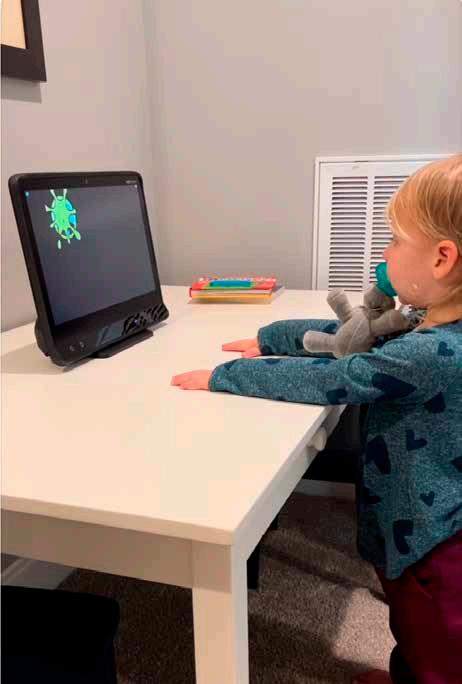
7 minute read
Learning to Speak with Her Eyes
A Tobii Dynavox family
BY LINDSEY WATSON
Iremember making the drive to our first Rett clinic at Cincinnati Children’s Hospital and feeling both anticipation and uncertainty. A few months had passed since Ava’s diagnosis of Rett syndrome, a rare genetic disorder that would profoundly impact every aspect of her life.
Up until around one year of age, Ava lived a normal childhood. She met some of her milestones, but barely babbled and needed assistance to walk. She struggled to gain new skills during physical therapy, and a series of genetic tests led to her diagnosis just after her second birthday.
I sat in the backseat with her so I could help with the entertainment while my husband drove us to the clinic. I looked over at my daughter with her engaging, blue eyes and lighted smile. She ate cheerios with her hands and held onto the musical toy we brought along.
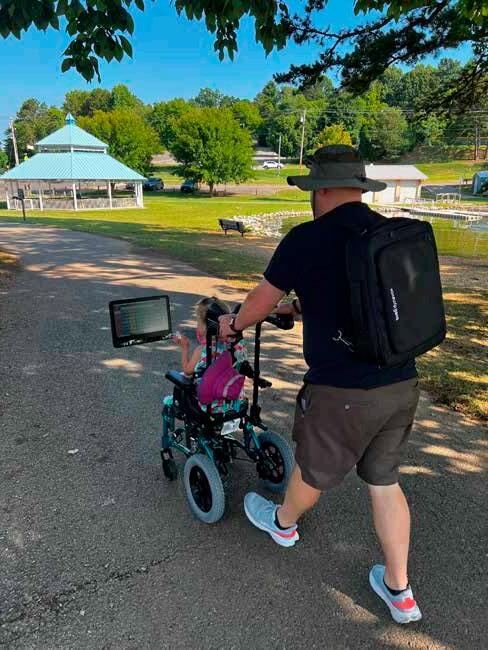
From what we knew, Ava would likely lose some of her current abilities like taking independent steps and using her hands functionally. This would make using sign language impossible. We also knew we could face other complex medical challenges, like a feeding tube, seizures, and breathing abnormalities. Our hopes for her future shifted dramatically during that time, and we braced ourselves for a lifetime of caring for her.
During the five-hour clinic visit, we met with Ava’s team—neurology, cardiology, speech, occupational therapy, physical therapy, and a dietitian. Each specialist walked us through the challenges ahead and outlined a plan of care. It was grueling and emotional. Meanwhile, Ava, still able to ride a scooting toy around then, happily sped across the room, unaware of the weight of the conversations happening around her.
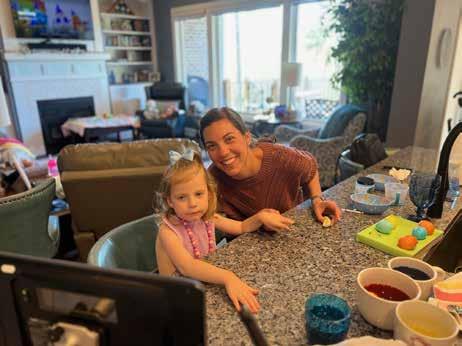
The speech pathologist introduced us to some soft tech communication tools—a Velcro board with picture symbols, including “yes” and “no”—which we could start using immediately. She also shared a story about another girl with Rett syndrome who had mastered a Tobii eyegaze device. This specialized computer system tracks eye movement, allowing users to select words or phrases to be spoken aloud. She described how this girl used her device to say playful and sassy things—even telling her mom that she was embarrassing her.
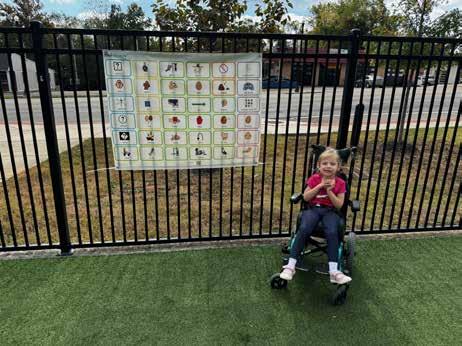
Overwhelmed and confused, I interrupted. Back home, our speech therapy sessions were focused on encouraging Ava to form her mouth and make simple vocalizations.
“So, you’re telling us Ava will never talk?” I asked hesitantly.
She smiled gently. “Probably not in the way that you and I do.”
This was a reality we hadn’t yet confronted. We left the clinic heartbroken, carrying an even more painful understanding of what a Rett syndrome diagnosis meant for our family. Our little girl would never call us “Mama” or “Dada,” never say “I love you,” never verbally tell us what she needed. It’s worth noting that some individuals with Rett syndrome do retain limited verbal abilities, but Ava is not one of them.

This visit to the Rett clinic set us on a new communication path exploring augmentative and alternative communication (AAC). Back in Tennessee, we shared what we had learned with Ava’s speech therapist, who helped us connect with a Tobii Dynavox representative. This was the same computer system the clinic therapist mentioned. We navigated the complex insurance process, and remarkably, Ava received her Tobii eye gaze device before her third birthday.
Although this new communication device seemed overwhelming, we dove right in. We calibrated the computer to track Ava’s eyes and let her choose a voice. We started with an Australian accent because it made her giggle, but later settled on “Ella,” a young American girl’s voice. Gradually, we introduced her to different buttons, offering her choices: “yes” and “no,” simple requests, and fun games designed to reinforce the concept of communication.
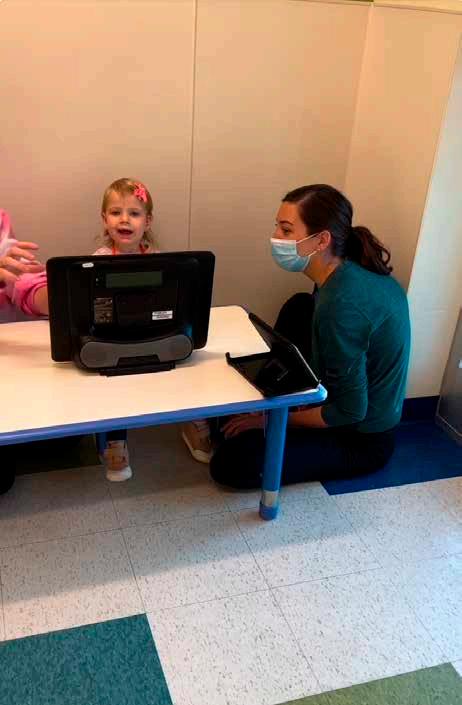
We put family member’s faces in the “pie throwing” game, so when she looked at Grandma or Grandpa, she could delightfully throw a pie at their pictures. This made her laugh, but also taught Ava how effective her eyes could be. It showed her that her beautiful, blue eyes had power. It didn’t take long until her power extended beyond playing games to expressing words and phrases, opening up a new world for all of us.
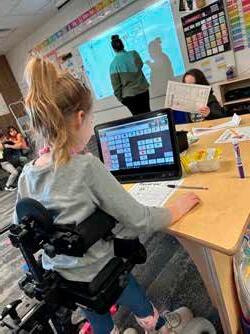
For many years, people underestimated the intelligence of those with Rett syndrome, mistakenly believing they had limited cognitive abilities. This myth has since been debunked. Research now shows that individuals with Rett syndrome have full cognitive capacity and plenty to say—they just need the right tools to communicate.
After practicing with the Tobii for a while, we attended a Rett syndrome conference. It was there that experts encouraged us to expand Ava’s communication system, offering her a more robust vocabulary library rather than limiting her choices. Just as typical children learn to speak the words they are exposed to, Ava needed access to a broad range of language to develop her communication skills fully.
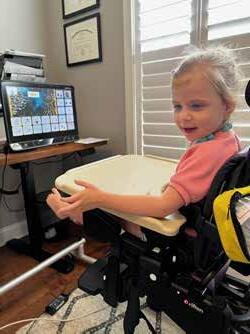
Ava is now five years old and has been using her Tobii device for more than half her life. With it, she can express her emotions, make choices, and even share her opinions—like when she cheekily tells her speech therapist to “go away!” in protest of a challenging task.
She can greet people in different ways—“Aloha!” “Howdy!” “Hi there!”— and uses her “Help” page to indicate when she needs a break, a drink, or more support in her seat.
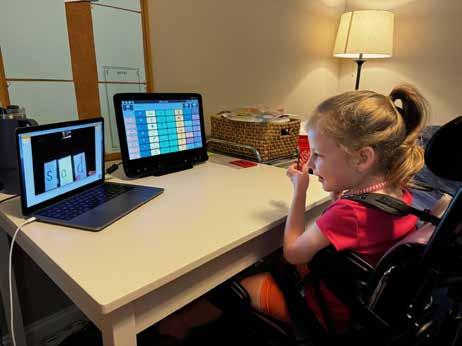
Most meaningful to us, Ava can also use it to say, “I love you.”
Her communication system is incredibly sophisticated. Using a 7x7 grid, she navigates between pages to discuss a wide variety of topics, from board games to horseback riding to circle time activities.
At school, Ava is a multimodal communicator, using both her Tobii and soft tech supports like pictures and flip charts. With soft tech tools she is learning to use eye-pointing, a technique where she directs her gaze to indicate choices. While we use simpler tools sometimes, her Tobii serves as her main mode of communication.
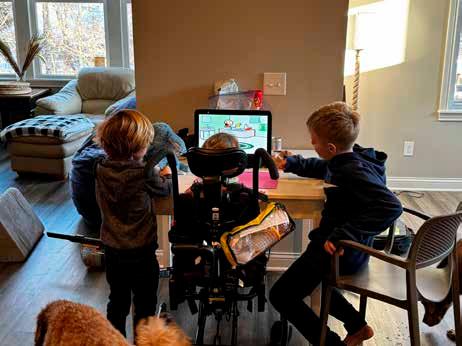
Ava’s friends are also big fans of her device and even line up to play games with her during recess. She can navigate to her “Kindergarten Friends” page, where each classmate has a button so she can choose a partner for activities. After school, when I ask her who she played with she can answer, just like any other child.
The Tobii has also revolutionized Ava’s education. With its eye-tracking software, her teachers can assess her comprehension. When presented with worksheets on her screen, we are working to see where her eyes land in order to confirm her understanding of letters, numbers, and reading skills. Thanks to her device, she is proving every day that she is capable and intelligent, and has so much to say.
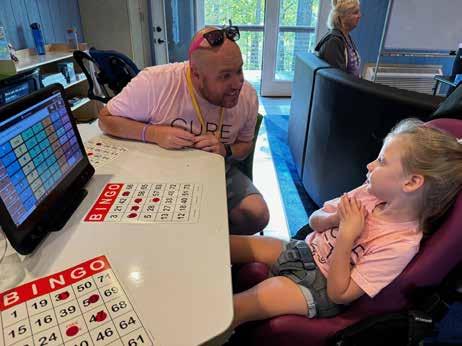
Her favorite page on her Tobii is the food page where she can request her favorite treats and put in her dinner requests. Allowing her to make choices gives Ava independence and a sense of self, something that so many of us take for granted.
The Tobii is more than just a device for our daughter —it’s her voice, her tool for self-advocacy, and her bridge to the world. We learned early on that Ava would not use words to speak, but we could have never imagined how impactful her voice would still be. Ava’s Tobii has given my daughter a way to let others hear her.
Dr. Andreas Rett, the physician who first identified Rett syndrome, reflected in his first observations, “There are many mysteries, and one of them is the girls’ eyes. I tell all the parents to look at their eyes. The eyes are talking to them.”
Ava has one button on her device that always gives me chills. In a sweet young girl’s voice, it reads, “My mouth doesn’t talk, but my eyes do.” I’m not sure there is anything more powerful than that.










